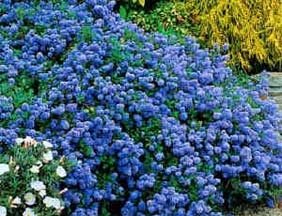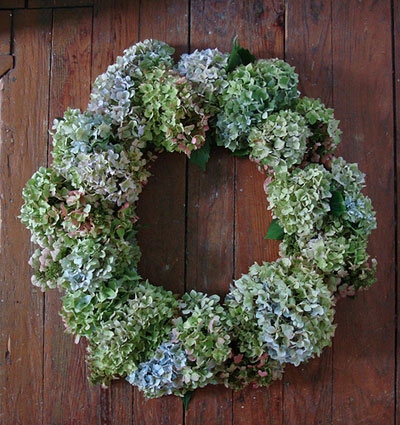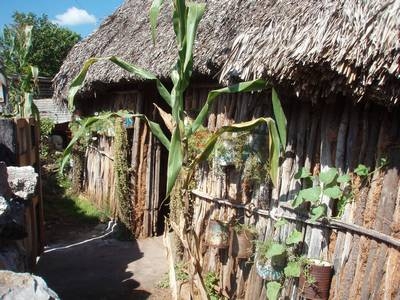If my plants could talk they’d have a long list of requests for Christmas. A lot of people tell me they talk to their plants but I don’t. Hopefully we are in sync without any words spoken by either of us. I do know they have some needs and wants so here are few of what made it to their .
From the fruit trees: All I want for Christmas are my two prunings per year, my two prunings per year, my two prunings per year. Gee, if I could have one each summer and winter, I’d produce lots of fruit each year. And Santa, I’d also like some nitrogen from composted manure or an organic fertilizer in March, then after I’ve set fruit in June and again after harvest. Also don’t forget to water me regularly and deeply during the dry months.
From the California native plants: All I want for Christmas is a place in the landscape. Here in California we are blessed with thousands of plant species, many found nowhere else on Earth, that have evolved with our unique climates, soils and fauna. Renew and rediscover the value we provide to conservation and habitats. Plant some of us to connect you to the land. And remember we need water and pruning, too, just on our own schedule.
From the houseplants: All I want for Christmas is a little light in the winter, not much fertilizer, if any and to dry out a bit between waterings. Also who likes cold drafts from the front door? Dust my leaves occasionally and don’t repot me during the winter and in return I’ll keep your indoor air cleaner and healthier.
From the birds in the garden: Please Santa, send me some berries to eat. I like redtwig dogwood fruits and also elderberries, toyon, wax myrtle, mahonia and coffeeberries. My hummingbird friends would like some flowering currants, manzanita blossoms and any salvias you happen to have in the workshop.
From the perennials: All I want for Christmas is the right growing conditions for me. If I’m a sun lover don’t try to grow me under the trees and if I like it cool and moist put me where I’ll be happy winter and summer. I’ll thrive and bloom and be happy and healthy and you won’t waste valuable time and money. If I could talk I’d also ask for some fresh compost in the spring and a light haircut would be nice, too.
From the spiders among the plants: We’re in all healthy gardens and we’re good for them. As important predators of pests we reduce insect damage on plants. We eat more insects and other invertebrates annually than the weight of all humans combined. All we want for Christmas is a pesticide-free garden so we can do our work.
From me to you: All I want for Christmas is for everyone to have a Happy Holiday.

 . If your soil is workable, I’d plant most native plants now. Even a winter dormant plant can benefit from the spring growth if it is in the ground for that to happen. Don’t plant in soil that is still thick gooey mud from the rain. Let the soil drain a bit between storms. Most natives put down roots during the cool wet months which prepares them for the warm, dry summer.
. If your soil is workable, I’d plant most native plants now. Even a winter dormant plant can benefit from the spring growth if it is in the ground for that to happen. Don’t plant in soil that is still thick gooey mud from the rain. Let the soil drain a bit between storms. Most natives put down roots during the cool wet months which prepares them for the warm, dry summer. blossoms aren’t completely dry when you harvest them you can finish them off inside. I also tuck hydrangea flowers into my Christmas tree and use some to decorate an evergreen outside.
blossoms aren’t completely dry when you harvest them you can finish them off inside. I also tuck hydrangea flowers into my Christmas tree and use some to decorate an evergreen outside. of your plant, even if damaged, can protect the crown from further freezing. This applies to citrus trees, too. If a perennial like Mexican bush sage froze and is now gooey and black, cut the plant down to the ground. It will re-grow come spring from the root system. If the old, dead foliage and stems are not gooey, leave them until after the last frost next spring. They provide an extra degree or two of protection for tender new buds and shoots coming along for next year. This advice applies to all your perennials. And the best part, you don’t have to lift a finger until next year. One last tip: if you do have plants that need covering in a frost, use a blanket, towel or other type of cloth and not plastic. The cold will go right through plastic covering and damage the plant.
of your plant, even if damaged, can protect the crown from further freezing. This applies to citrus trees, too. If a perennial like Mexican bush sage froze and is now gooey and black, cut the plant down to the ground. It will re-grow come spring from the root system. If the old, dead foliage and stems are not gooey, leave them until after the last frost next spring. They provide an extra degree or two of protection for tender new buds and shoots coming along for next year. This advice applies to all your perennials. And the best part, you don’t have to lift a finger until next year. One last tip: if you do have plants that need covering in a frost, use a blanket, towel or other type of cloth and not plastic. The cold will go right through plastic covering and damage the plant..jpg) letide’ bloom right at Christmas time. ‘Chansonette’ is another beautiful variety with rich pink flowers. Sasanqua camellias can tolerate a little more sun than the more common camellia japonicas. They come in a variety or forms from compact shrubs to open vining types that can be espaliered. If you don’t have any of this variety they would make a good addition to your garden.
letide’ bloom right at Christmas time. ‘Chansonette’ is another beautiful variety with rich pink flowers. Sasanqua camellias can tolerate a little more sun than the more common camellia japonicas. They come in a variety or forms from compact shrubs to open vining types that can be espaliered. If you don’t have any of this variety they would make a good addition to your garden.
 utterflies. Fried pig skins are very popular and some side yards were used for a 50 gallon drum of hot oil to produce this treat. I have to confess, I passed after seeing the product before the cooking process.
utterflies. Fried pig skins are very popular and some side yards were used for a 50 gallon drum of hot oil to produce this treat. I have to confess, I passed after seeing the product before the cooking process.